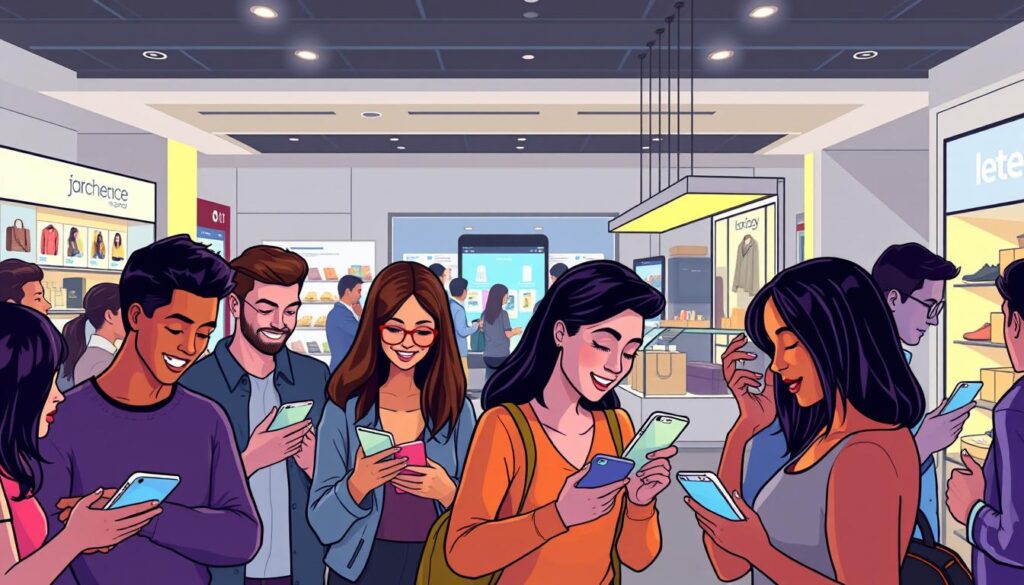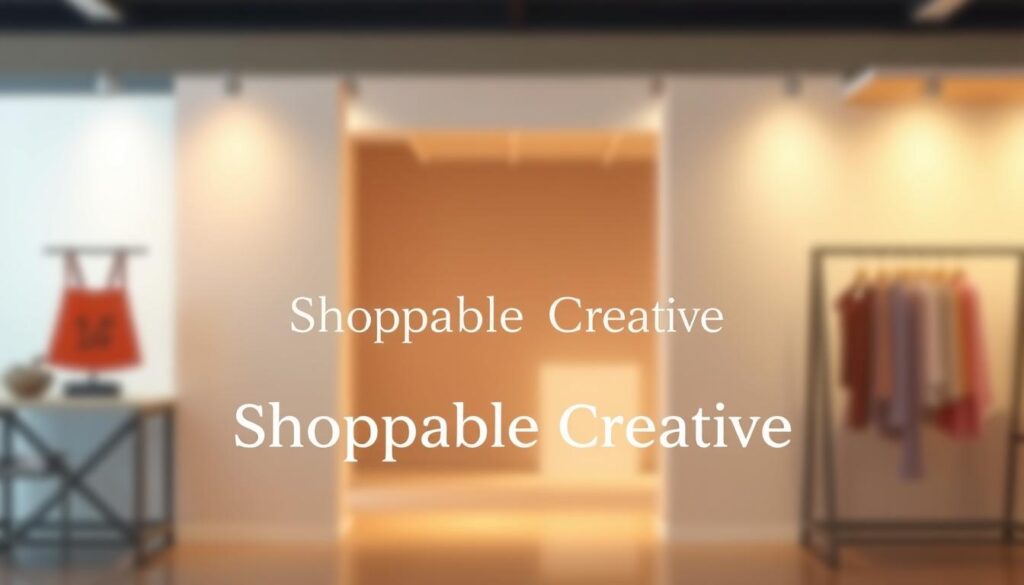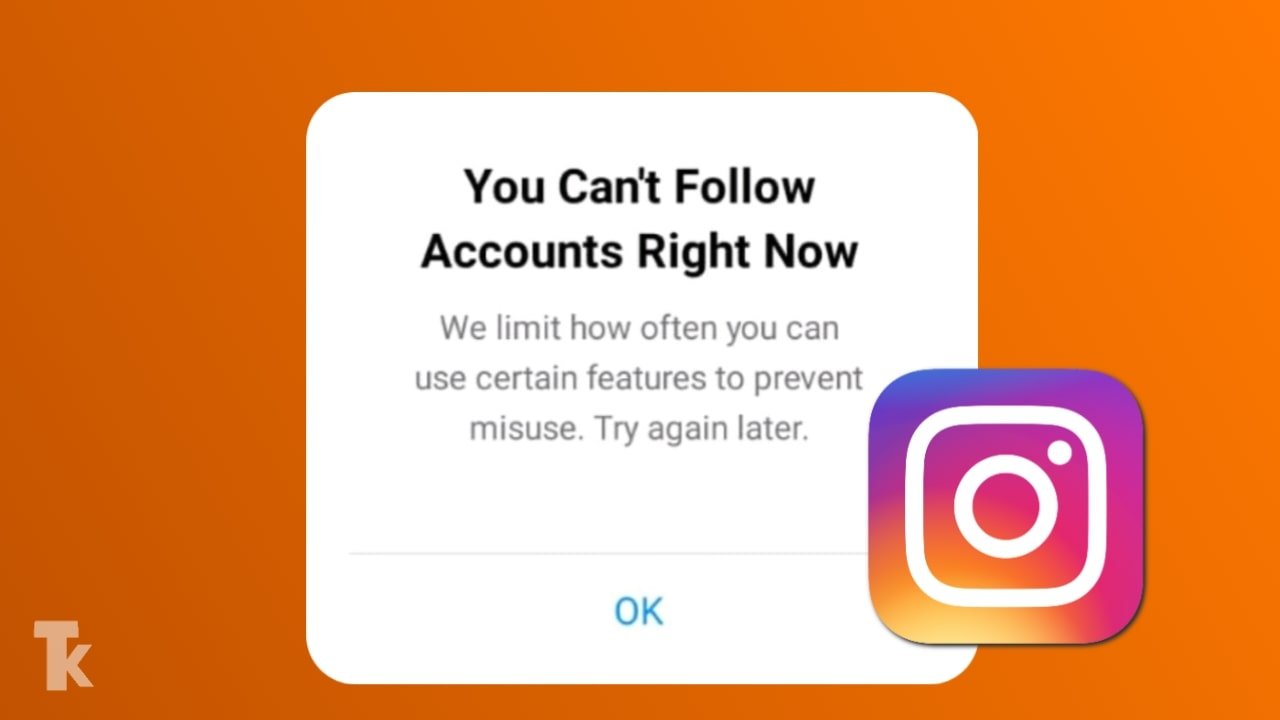Social commerce in 2025 represents a $100 billion+ shift in the U.S. market, integrating product discovery, TikTok Shop integration, and checkout directly into social feeds. By leveraging tools like Shopify Sync and Meta Advantage+ catalog ads, brands can reduce friction and capture impulse buys instantly. This roadmap prioritizes Social SEO and live shopping conversion rates to turn engaged viewers into loyal customers within 90 days.
Accenture projects social commerce will hit $1.2 trillion by 2025, growing three times faster than traditional ecommerce.
That number changes how brands, creators, and small businesses plan for sales. Discovery, consideration, and checkout now happen inside apps you and your customers use every day.
Platforms like Instagram, Facebook, TikTok, Pinterest, and YouTube remove friction with storefronts, shoppable posts, live shopping, and checkout without leaving the app.
This shift means you can meet shoppers where they browse, shorten the path to purchase, and use product posts and creator partnerships to boost conversion.
In this guide, we’ll explain what this new buying flow means, compare major platforms, and give a clear 90-day strategy you can start using in the U.S. market.
Key Takeaways
- Social commerce is scaling fast—plan for discovery-to-checkout inside apps.
- Keeping customers in-app reduces cart abandonment and improves conversion.
- Different platforms favor different product types and audience behaviors.
- Simple storefronts, shoppable posts, and live events drive immediate sales.
- We’ll provide a practical 90-day roadmap to launch and measure results.
Why In-app social commerce matters right now
Billions of active accounts and fast-growing purchase behavior mean shopping now starts where people scroll every day.
Present-day scale, growth, and the U.S. opportunity
Reach is massive: 5.22 billion social media users as of Oct 2024 and Accenture’s $1.2T forecast for social commerce by 2025 show clear scale.
Social sales are projected to hit 20.8% of online sales by 2026. Mobile-first habits drive this. In the U.S., 82% of millennials and 73% of Gen Z prefer shopping on phones.
What this changes about the shopping experience
Keeping buyers inside apps compresses the path from discovery to checkout. Shoppable posts, storefronts, live streams, and saved payments cut clicks and reduce abandoned carts.
- Instagram and Facebook surface new products—83% and 74% discovery rates respectively.
- Short video and mobile use turn curiosity into quick purchases.
- Native signals like likes and comments give you better data to target ads and drive sales.
Defining social commerce versus traditional ecommerce and social selling

Modern shopping blends browsing and checkout, letting customers complete purchases where they consume content. This change is the core of social commerce and it matters for your marketing strategy.
Seamless discovery-to-checkout inside feeds
Social commerce integrates browsing, shopping, and support inside one platform. Shoppable posts, native shop tabs, and messaging keep the flow smooth. That reduces page loads and drop-offs in the shopping experience.
Social selling is different. It focuses on relationships. Teams answer questions, nurture leads, and warm prospects before a purchase.
- In-feed tags + native checkout = fast conversion for low- to mid-ticket products.
- High-consideration items often need education and an assisted checkout path.
- Visible shipping and returns policies in-app boost buyer confidence.
| Workflow | How it works | Best fit |
|---|---|---|
| Native shop & checkout | Tag products, show details, complete sale inside platform | Low–mid ticket products |
| Social selling outreach | Conversations, demos, DMs, and follow-up to convert | High-consideration or custom products |
| Hybrid | Content educates, messaging assists, checkout native or on-site | Products needing research plus fast buy options |
The in-app journey: From discovery to post-purchase advocacy

A single short clip can introduce a product, answer a question, and nudge someone toward checkout. This is how discovery, conversion, and advocacy connect inside feeds and Stories.
Discovery and engagement with feeds, Stories, and video
Start with content that earns attention. Use posts, Reels, and Stories to show benefits in 10–30 seconds. Optimize captions and hashtags for Social SEO to ensure your content surfaces when users search for solutions.
Partner with creators to widen reach. Encourage shares, saves, and AMAs to deepen engagement.
Conversion with shoppable posts, live shopping, and in-app checkout
Make it easy to buy. Tag products, pin value in captions, and add clear “Shop Now” CTAs.
Schedule live shopping events for demos and limited offers. Combine urgency with real-time Q&A to boost purchases.
Reduce friction with saved payment options and transparent shipping and returns inside the checkout flow.
Retention through messaging, reviews, and UGC
After purchase, follow up with proactive DMs, how-to content, and care tips to lower returns and raise satisfaction.
Collect reviews and reshare customer posts as proof. Use targeted ads and back-in-stock alerts to bring buyers back.
| Stage | Action | Outcome |
|---|---|---|
| Discover | Short video, influencer tags, Stories | Awareness and initial interest for brands |
| Engage | Contests, AMAs, saved posts | Higher engagement and intent |
| Convert | Shoppable posts, live shopping, one-click checkout | Faster shopping and fewer drop-offs |
| Advocate | DM support, UGC, reviews | Repeat purchases and referrals |
Choosing the right social media platforms for U.S. shoppers
![]()
Not every channel fits every brand; platform choice should map to who your customers are and what you sell. Start by matching your audience and product type to platform strengths. Then test one or two channels before you scale.
Instagram, Facebook, TikTok, Pinterest, and YouTube strengths
Instagram supports product tags across Feed, Stories, Reels, and in-app checkout, so it works well for visual products and impulse buys.
Facebook offers Shops, wish lists, messaging, and U.S. in-app orders—good for community-driven brands and repeat buyers.
TikTok pairs viral discovery with seamless TikTok Shop integration, Shop tabs, live shopping, and product embeds for fast, trend-driven sales.
Aligning platform selection with audience, product, and goals
- Match categories: beauty and fashion prosper on Instagram and TikTok; home and lifestyle perform well on Pinterest and YouTube.
- Evaluate features: storefronts, checkout, live events, messaging, and analytics depth matter for growth.
- Plan your channel mix: lead with 1–2 primary platforms, sync catalogs to avoid stock issues, then expand.
“Use platform-native creative and data signals—saves, clicks, and watch time—to refine targeting and creative.”
The in-app feature toolkit you need to sell products

A practical feature set turns browsing into buying—if you assemble it correctly. Start by mapping how customers move from discovery to checkout on each platform you use.
Storefronts and product detail pages
Set up storefronts that mirror your catalog structure. Highlight bestsellers, new arrivals, and seasonal collections. Build product pages with clear images, pricing, size guides, reviews, and tagged content.
Shoppable posts and shoppable ads
Use shoppable posts to convert organic reach into quick buys. Tag products and keep catalog mappings accurate. Run Meta Advantage+ catalog ads to retarget browsers automatically and reach lookalike audiences with dynamic product sets.
Live shopping and creator collaborations
Plan live shopping events with creators to demo real use cases. Offer event-only bundles and answer FAQs in real time. Branded creator content should point directly to in-app product pages to shorten the path to purchase.
In-app messaging and assisted checkout
Provide assisted checkout via direct messages. Help customers choose sizes, compare colors, and send payment links when needed. Standardize SLAs for replies so buyers get fast, helpful service that prevents drop-off.
- Inventory sync: Monitor availability to avoid failed purchases.
- Attribution: Add UTM tags or platform pixels to track ads and posts.
- Playbooks: Document platform-specific steps so your team can repeat wins and scale across channels.
| Feature | What it does | Quick win |
|---|---|---|
| Storefront | Mirrors ecommerce categories and collections | Improves discovery and shop conversion |
| Product pages | Images, descriptions, pricing, reviews, tags | Reduces questions and returns |
| Shoppable posts & ads | Tag products in posts; run dynamic ad sets | Turns engagement into sales |
| Live shopping | Real-time demos and purchases during events | Boosts urgency and average order value |
| Messaging & assisted checkout | DM help, direct links, size guidance | Lowers abandonment and increases trust |
For platform comparisons and playbooks, see this helpful overview of leading platforms to match features with goals.
Content that converts: Shoppable creative and video strategy

Short-form video and crisp images decide whether a scroll becomes a sale. Use this as your north star when you plan creative that must convert.
Video trends, influencer marketing, and live shopping shape how shoppers discover and buy. Brands like JUNO & Co., Milk Bar, and Kylie Cosmetics drive discovery with short clips and linked storefronts.
Optimizing images, Reels, Shorts, and TikToks for shopping
Lead with a hook in the first 1–2 seconds. Show the product quickly and focus on benefit and texture within 5–7 seconds.
Add captions, concise copy, and product tags. Pin a key FAQ comment or link so users find details fast.
- Repurpose live segments into evergreen clips for Stories and shorts.
- Use native CTAs like “Tap to shop” and “See details” to keep the experience friendly.
- Test UGC vs. polished, voiceover vs. text, and demo vs. lifestyle to learn what drives engagement and sales.
| Asset | Primary goal | Quick tip |
|---|---|---|
| Image post | Showcase product detail | Use clear close-ups and a single CTA |
| Short-form video | Drive discovery and clicks | Hook fast; reveal payoff in 5–7s |
| Live clip | Build urgency and demo | Offer event-only bundles; clip highlights after |
| Story highlight | Extend shelf life | Save FAQs and how-tos for quick reference |
Align KPIs to the funnel: views and saves for discovery, product page taps for consideration, and in-app purchases for conversion. Keep edits tight, match platform norms, and cross-post with small tweaks for best reach.
Banking on UGC, reviews, and social proof to drive trust

When shoppers see real people using your products, trust rises and purchase intent follows.
UGC lifts conversion rates by about 29%, and millennials find this content 6.6x more persuasive than polished brand posts. That makes customer content a high-value growth lever for social commerce and commerce strategies.
Hashtags, curation, and republishing customer content
Encourage buyers to share photos and short videos. Give them a clear branded hashtag and a simple prompt that sparks creativity.
Curate top submissions into your shop and product pages. Tag products and sync inventories so every example links to a live buy flow.
- Request reviews with quick in-app reminders; spotlight quotes that answer common objections.
- Always ask permission, credit the creator, and secure UGC licensing rights to reuse content in ads or other channels.
- Mix customer posts with creator content to show diverse fits and use cases.
| Action | Why it works | Quick example |
|---|---|---|
| Branded hashtags | Creates searchable hubs of proof | Hashtag hubs for fits or routines |
| Curated storefront UGC | Shows real-life context on product pages | Rothy’s-style tagged customer galleries |
| Post-purchase reviews | Answers objections and boosts trust | In-app reminder + spotlighted quote |
| Community contests | Drives bursts of fresh content | Seasonal UGC push with rewards |
Influencer and affiliate strategies that scale brand awareness and sales

81% of buyers rely on recommendations from creators, friends, or family. That makes creator partnerships a powerful path to sales and brand awareness.
Start by defining creator tiers: mega, macro, micro, and nano. Prioritize authentic engagement over raw follower counts. A smaller creator who connects with an audience often drives better product interest.
Structure clear affiliate terms with fixed commission, cookie windows, and content rights. Make onboarding simple so creators can post fast.
- Require product tagging so clicks go straight to your product pages for fast conversion.
- Co-create briefs that give creative freedom but include brand guardrails and compliance rules.
- Mix goals: some creators for brand awareness, others for last-click conversion during drops or live events.
Amplify top posts with targeted ads to reach lookalike audiences. Track each creator by reach, engagement rate, product page taps, and attributed purchases.
“Long-term relationships turn one-off posts into ongoing revenue and recurring live co-hosts.”
Offer perks like early access, exclusive bundles, and clear disclosure rules. This protects trust and helps turn creators into ambassadors who scale your commerce channels.
Live shopping playbook: Planning, hosting, and converting in real time

Live events turn casual viewers into buyers when you plan every moment with intent. Live shopping is growing fast and could account for 10–20% of ecommerce by 2026, with live shopping conversion rates often exceeding traditional e-commerce by 3x or more. Brands like Glamnetic and Snug show how focused roles and strong hosts lift sales dramatically.
Pre-event hype and a clear run-of-show
Pick the platform where your audience already spends time and name a compelling host. Build buzz with teasers, countdown Stories, and calendar reminders.
Script segments: welcome, short demo of a key product, size/fit tips, FAQs, bundle reveals, and a final countdown.
Interactive moments and conversion mechanics
- Engage viewers with polls, Q&A, and pinned FAQs to boost engagement.
- Tag products continuously and offer live-only bundles to drive urgency and sales.
- Deploy moderators to answer DMs, surface links to your shop, and handle issues for users.
After the stream, repurpose the recording into short video clips and posts. Boost high-performing moments with ads. Measure peak viewers, watch time, product clicks, add-to-carts, and purchases, then iterate on day, host style, and offers to improve results.
Data and AI: Social listening, sentiment, and hyper-personalization

Data-driven listening turns noisy feeds into prioritized actions for content, ads, and merchandising. You can unify mentions across 30+ channels and 400K+ media sources to spot trends fast.
From insights to action across content, ads, and merchandising
Use analytics to track what customers and consumers say. Apply sentiment to tune tone and product positioning by segment.
- Personalize content and ads using watched videos, saved posts, clicks, and purchases.
- Feed signals into merchandising. Bundle co-viewed products and highlight themes on storefronts.
- Set alerts for reputation risks, stock issues, or review spikes so you respond quickly.
Measuring lift from AI-powered recommendations and chat
Deploy AI chat to answer FAQs, recommend products, and rescue abandoned carts 24/7. Then measure impact.
Track CTR, AOV, and conversion against control groups. Build predictive audiences for retargeting and use creative intelligence to improve thumbnails and hooks.
| Use case | Action | Metric |
|---|---|---|
| Listening | Spot rising topics and competitor moves | Share of voice, trend velocity |
| Sentiment | Adjust messaging by audience | Positive rate, response time |
| AI chat & recs | Recommend products and close carts | CTR, AOV, conversion lift |
Checkout and UX best practices to reduce friction and cart abandonment
A smooth checkout is the last mile that turns interest into income. Make that mile fast, clear, and predictable so customers finish a purchase without doubts. Good UX reduces friction, and that directly cuts abandonment.
Data point: ecommerce loses about $18B yearly to cart abandonment. Simple changes—quick payments, synced inventory, and instant help—recover a significant share of that. While in-app checkout fees may vary compared to your own site’s gateway, the higher conversion rate typically offsets the cost.
Catalog sync, inventory, payments, and policy transparency
Keep catalog data clean and synced so product tags, prices, and availability are accurate across platforms. Pinterest and Shopify Sync integrations auto-update inventory to avoid showing out-of-stock items.
- Ensure fast, secure checkout options: saved cards, digital wallets, and one-tap flows.
- Display shipping, returns, and exchange policies before payment to build trust.
- Use concise titles, clear images, and scannable descriptions that answer size, material, and care questions.
- Provide instant help via DMs or chat during checkout; preload quick replies for common blockers.
- Automate back-in-stock alerts and waitlists to recapture demand without frustration.
Test end-to-end on iOS and Android, and compare in-app checkout performance to your website flow. Iterate toward the simplest path that converts.
| Element | Risk | Action |
|---|---|---|
| Catalog sync | Wrong price or sold-out products shown | Automated feeds; hourly inventory updates |
| Payment flow | Drop-off from long forms or failed cards | One-tap wallets; saved payment testing |
| Product pages | Questions that block buy intent | Short specs, size guides, and strong images |
| Live/shop events | Stockouts during peaks | Fail-safes: alternates, preorders, and quick refunds |
Tip: Map failure points and measure recovery rates. Personalized recommendations and instant support reduce abandonment and improve the overall shopping experience.
Compliance, trust, and governance across platforms
Compliance and honest disclosure protect your brand while helping customers buy with confidence. You must follow each platform’s rules for product claims, returns, and prohibited items. That reduces takedowns and preserves trust.
Require clear disclosures for influencer and creator posts and during live events to meet FTC guidance. Train creators on how to label sponsored content and on permitted product claims.
Standardize content review before tagging products. Check facts, accessibility, and brand safety. Use Verified Merchant or similar programs to add badges and unlock extra shop features that reassure consumers.
Protect customer data by limiting PII in DMs and by using only approved payment flows. Document response SLAs for messages and comments, and create escalation paths for sensitive issues.
- Moderate comments and live chats to stop misinformation and unsafe behavior.
- Keep records of promotions, offers, and policy updates for audits or disputes.
- Review governance quarterly as platforms update advertising and commerce rules.
KPIs that matter: How to measure social commerce performance
Tracking the right signals turns noisy engagement into sales-ready insights you can act on.
Attribution across posts, live events, and creators
Set clear attribution rules so you know which posts and creators move the needle. Use platform pixels and unique links to capture clicks and conversions.
Live events need their own metrics: peak viewers, watch time, clicks, and direct sales. Treat a creator post as both a discovery and a last-referring channel when possible.
Tip: Log referrals and UTM tags consistently. That way you can measure assisted conversions that later happen on your website.
Benchmarks for reach, engagement, CTR, and conversion
Use tiers to keep reports simple: awareness, consideration, and conversion. Each tier has clear KPIs you can standardize across channels.
- Awareness — reach, impressions, and video views.
- Consideration — saves, product taps, CTR on posts and ads.
- Conversion — in-app purchases, conversion rate, and AOV.
| Stage | Metric | Quick benchmark |
|---|---|---|
| Awareness | Reach / Views | Top 10% platform benchmark |
| Consideration | Engagement / CTR | Compare by product category |
| Conversion | Purchase rate / AOV | Track weekly and monthly |
Track creator performance with scorecards that compare format, offer, and lift. Monitor content efficiency: revenue per post, per creator, and per live minute.
“Report weekly for agility and monthly for strategic direction; run holdout tests to tie spend to incremental lift.”
Use cohort analysis to measure repeat purchases and LTV from customers acquired via creators or live events. That data helps shape your next test and overall strategy.
What’s next: Trends shaping in-app social commerce
Emerging tools like AR and voice are changing the way consumers interact with product content.
Augmented reality is booming—almost 75% of the world and nearly all smartphone users are expected to use AR frequently. Explore AR try-ons for beauty, fashion, and home to cut returns and boost buyer confidence.
Voice commerce is also growing. By mid‑2022, over 27% of U.S. customers had made payments via voice. Prepare product data so discovery and payments work naturally with voice assistants.
Creator-led commerce, NFTs, and evolving live formats
Creator-led storefronts will keep blurring content and shop. Test creator collaborations that let fans buy directly from curated collections.
Brands are experimenting with NFTs for limited drops, loyalty, or access. Use them only when they add clear value to users and align with your strategy.
- Shift live formats toward episodic shows, co-hosts, and cross-platform simulcasts.
- Show sustainability credentials clearly—67% of shoppers favor creators who advocate sustainable products.
- Invest in 3D assets, short-form video editing, and live production skills to stay competitive.
Watch platform rollouts of new features and pilot early—flexible strategy wins as trends and users evolve.
Power examples to learn from right now
Real brands make clear what works: tight demos, direct tagging, and regular community touchpoints.
Fashion, beauty, home, and food brands mastering in-app sales
Here are compact case studies you can model. Each one shows a repeatable tactic you can test in 30–90 days.
- Lululemon: #TheSweatLife turns customer posts into steady conversions by pairing UGC with shoppable posts.
- Milk Bar: Colorful live videos and Stories link directly to storefront products for impulse purchases.
- JUNO & Co.: Short demos and how-tos drove about 10x sales on TikTok versus Instagram and Facebook.
- Glamnetic: Regular Facebook live shopping with exclusive offers shows the value of a dedicated live host role.
- Rothy’s: Catalog sync with Pinterest, Verified Merchant, and shopping ads supports steady, intent-driven traffic.
- Snug: Creator-led live events created a 450% uplift in sales during one hour-long stream.
- CALPAK: Using in-app checkout on Instagram removed friction for ready-to-buy audiences.
- Kylie Cosmetics: Tags across Instagram and TikTok Shopping help creators convert discovery into fast purchase.
- 100% PURE: Pinterest storefront plus promoted pins capture high-intent searches with shoppable visuals.
Repeatable tactics to copy
- Tight demos with a clear benefit in 5–10 seconds.
- Consistent product tagging so every post links to buy flows.
- Time-limited offers and event-only bundles to drive urgency.
- Ongoing community engagement—reposts, replies, and UGC prompts that build trust.
Small tests of these patterns often show outsized sales lift when you match format to audience and platform.
Action plan: Launch, optimize, and scale your social commerce strategy
Start your rollout with a tight 90-day plan that maps channels to clear business outcomes. This gives you a repeatable way to test creative, creators, and offers while you collect real results.
90-day roadmap for teams and tool selection
Days 1–14: Pick 1–2 primary platforms, connect your catalog to Pinterest or Shopify feeds, set up storefronts, and tag your top 20 products.
Days 15–30: Publish shoppable content 3–5x per week. Test two creative angles and enable clear messaging SLAs so customer questions get fast replies.
Days 31–45: Host your first interactive event with a creator. Prepare bundles and live-only offers to drive urgency and track live metrics.
Days 46–60: Add UGC to product pages. Formalize creator outreach, set affiliate terms, and implement tracking for each partner.
Days 61–75: Turn top organic posts into shoppable ads. Refine audiences and add retargeting to recover interest.
Days 76–90: Deploy AI chat for FAQs and recommendations. Test abandoned-cart DMs responsibly and measure lift.
- Weekly: Review KPIs by post, product, and platform. Iterate on hooks, CTAs, and tagging accuracy.
- Monthly: Expand to a secondary channel or feature—example: Pinterest Shopping or YouTube product tags.
- Tooling: Use unified management for catalog sync, listening, analytics, and cross-channel moderation.
- Scale: Document playbooks, train your team, and systematize wins so you grow efficiently.
“Orchestrate end-to-end journeys: lead with analytics, host interactive events, and let UGC plus creators amplify shoppable content.”
Conclusion
Shopping now happens in feeds where attention, trust, and checkout meet.
Social commerce blends discovery and purchase on major platforms and keeps gaining share of sales through 2026. Features that reduce friction lift conversions while live events, UGC, and creator programs build trust fast.
Start practical: pick one platform, make key content shoppable, and fix checkout blockers. Lean on creators and customer content to answer questions in real time and create urgency.
Use data and AI to personalize recommendations, predict demand, and protect customer experience. Measure what matters—attribute posts and live events fairly—and reinvest in proven plays.
With a focused 90-day plan, you can launch confidently, optimize quickly, and scale the way you reach customers and grow sales.
FAQ
What is in-app social commerce and why does it matter now?
In-app social commerce means customers discover, evaluate, and buy products without leaving a media platform like Instagram, TikTok, or Pinterest. It matters because these platforms reach billions, shorten the path to purchase, and unlock new U.S. revenue opportunities for brands through faster discovery, lower friction checkout, and higher engagement.
How does in-app shopping differ from traditional ecommerce and social selling?
Traditional ecommerce usually sends shoppers to a standalone website. In-app shopping keeps discovery, product pages, and checkout inside the platform. That seamless flow—driven by feeds, short-form video, and shoppable posts—reduces friction and improves conversion compared with linking out to external stores.
What parts of the customer journey occur inside an app?
The in-app journey covers discovery via feeds, Stories, Reels, and video; conversion through shoppable posts, live shopping, and in-app checkout; and retention via messaging, reviews, and user-generated content (UGC). Each stage uses platform tools to move people from awareness to repeat purchase.
Which platforms should U.S. brands prioritize?
Prioritize platforms where your audience already spends time. Instagram and TikTok are great for visuals and video-driven discovery. Facebook offers broad reach and catalog tools. Pinterest works well for intent-driven shopping, and YouTube supports long-form demos. Match platform strengths to product type, audience, and campaign goals.
What in-app features are essential to sell products effectively?
Key features include storefronts and product detail pages, shoppable posts and ads, live shopping with creator collaborations, and in-app messaging for customer support and assisted checkout. Syncing catalogs and inventory ensures accurate availability and smoother purchases.
How do I create content that converts on these channels?
Use clear product-focused visuals, short demo videos (Reels, Shorts, TikToks), and strong CTAs. Highlight benefits quickly, show the product in real-life use, and add tags or links so viewers can buy instantly. Test formats and optimize for mobile viewing and sound-off playback.
How important is user-generated content and reviews?
UGC and reviews build trust and social proof. Reposting customer photos, curating hashtag feeds, and surfacing reviews in product pages increases credibility and conversion. Encourage satisfied customers to leave feedback and make it easy to share their content.
What role do influencers and affiliates play?
Influencers and affiliates scale reach and lend authenticity. Use creators for product demos, live events, and timed promotions. Track performance with unique links and codes to measure attribution and optimize partnerships that drive measurable sales.
How do I plan and run a successful live shopping event?
Start with pre-event promotion, a clear run-of-show, and interactive moments like Q&A or polls. Offer exclusive deals and tag products during the broadcast. After the event, amplify highlights and follow up with viewers through messaging or retargeted ads to boost conversion.
How can data and AI improve-my strategy?
Use social listening and sentiment analysis to spot trends and optimize content. AI-powered recommendations personalize product suggestions, while analytics reveal which posts, creators, and formats drive lift. Turn insights into better targeting, merch decisions, and ad creative.
What checkout and UX practices reduce cart abandonment?
Reduce steps at checkout, offer multiple payment methods, keep catalog and inventory synced, and show clear shipping and return policies. Fast, transparent checkout flows and assisted support via in-app messaging cut friction and improve completion rates.
What compliance and trust issues should I watch for?
Ensure accurate product information, follow platform advertising rules, collect and store customer data securely, and comply with consumer protection laws. Transparent pricing, clear return policies, and honest influencer disclosures build trust and protect your brand.
Which KPIs should I track for in-app performance?
Monitor reach, engagement, click-through rate (CTR), conversion rate, average order value, and retention. Attribute performance across posts, live events, and creators to understand ROI and benchmark results against industry standards.
What emerging trends should brands prepare for?
Watch AR try-ons, voice commerce, sustainability signals, creator-led commerce, and new live formats. These trends shape discovery and shopping experiences and create opportunities for differentiation and deeper customer engagement.
How do I start a 90-day plan to launch and scale my strategy?
Focus on three phases: launch (build storefront, run test campaigns, choose 1–2 platforms), optimize (analyze results, refine creative, test live shopping), and scale (expand creators, invest in ads, and automate inventory sync). Use simple KPIs to measure progress and iterate fast.



